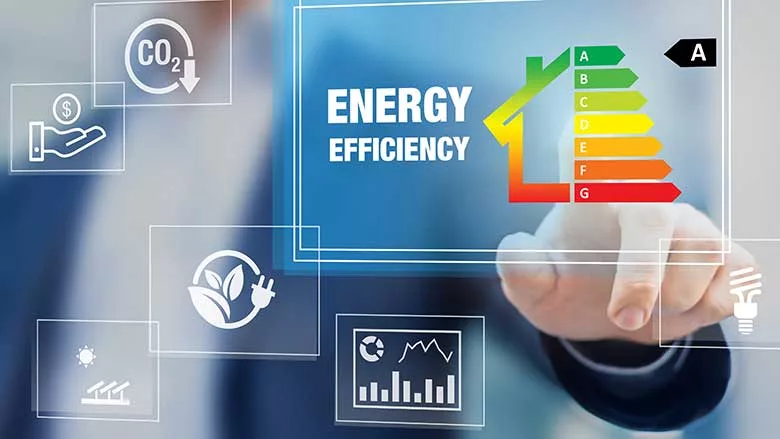Today’s Technology to Market (T2M) – the bidirectional thermal district
District systems offer more cost-effective means of heating and cooling.

Photo courtesy of Getty Images
District systems, which have been around for centuries, provide buildings with a product created with technology beyond what an individual can either afford or apply. The primary advantage is the delivery of more cost-effective heating or cooling to the building.
Today’s technology consists of bidirectional heating and cooling and sharing for HVAC and water heating — one set of pipes, maybe part as only one-pipe, for two primary advantages:
- Provide an owner with a source of energy to reduce the costs of both installation and operation; and
- Share energy among buildings.
A climate change goal is to slow consumption in the face of increasing demand. How does one accomplish that without changes to the building, to heat and cool with less electricity and/or fossil fuel?
Individual buildings use less energy through higher efficiency and by reclaiming heat.
- Cooling waste heat to heat spaces or water in the building, then in the district;
- All the equipment operates in the sweet spot — existing technology;
- Minimize the effect of outdoor temperature versus forced operation at extremes; and
- Sharing among buildings: Refrigeration to heating homes; homes heating schools or extended care facility water; offices heat apartments; etc.
The district, especially in the startup phase, addresses an imbalance in the district after sharing.
As buildings, even homes, become better insulated, most will have excess heat. Most commercial buildings have excess heat. Hot water requires heat. A district functions as first stage recovered heat, second stage thermal opportunity and last stage new energy.
Currently, an individual building rejects unwanted hot air or cold air into the atmosphere. This is less efficient, and this wasted energy is unable to be shared. The district may reject this individual building’s heat or cold to a non-conditioned space in multiple ways and may use better technology, but only after “sharing the energy” among other buildings that may want either the unwanted heat or cold. If a district is short on heat, then the district has multiple ways to add heat, but only after the net energy available as “waste” from another building has been used.
One key point is individual buildings heat or cool water as required. The district only heats or cools water — never at the same time — to a specific operating range. The district has options to add or remove heat not available to building owners. The same logic for one-way districts can also be applied to a bidirectional district, but only after the bidirectional concept's net energy effect has taken place. High-efficiency central boilers eliminate inefficiency.
One-way districts fight thermal losses — or the difference in temperature to the ground temperature. A bidirectional district operates best at ground temperature.
One-way districts only provide heating or cooling and do not have the ability to do both or share. In heating, one-way districts deal with insulation issues and stress from high temperatures and pressure, which are eliminated by bidirectional distribution at ground temperature. When cooling, many districts must employ a high-temperature differential for water from the time it enters the building to when it leaves and returns to the central plant. The bidirectional district goal is exactly the opposite: Net zero in the building or at least within the operating range to avoid new energy.
A bidirectional district at ground temperature brings into play “thermal opportunities,” using various means to either add heat from anything hotter than the ground or reject heat to anything cooler than the ground or to the ground itself. The ideal temperature of wastewater is the same as the district target range. You can trade energy by putting both pipes in the same ditch. Dewatering and runoff to irrigation and retention is in a large category called GeoExchange, which includes traditional geothermal boreholes or ditches and the entire class of surface water, from lakes and rivers to water wells and aquafers. This works to the advantage of the district, especially when coupled with all known renewables, including storage.
The bidirectional district represents HVAC and water operating with today’s technology in the sweet spot; energy efficiency in the street plus sharing to a ground-friendly range. The individual building operates with every conventional or hybrid HVAC system more efficiently and now shares among water heating and wastewater, as well — probably not all at once, even in new construction, but in a phased transition.
Existing buildings in the district have available energy efficiency in the street and may only use the district initially to heat water or heat and cool ventilation air to meet new standards. The existing equipment could be phased out later, or it may evolve to the advantage of the district as the district matures. Buildings with GeoExchange will operate at even lower energy use.
In the end, the district has multiple goals:
- Enable the building to net energy and use less;
- Reduce new energy required; and
- Provide revenue to the “owner” of the district as an energy services provider. Utility companies still bill for consumption. The bidirectional source is a long-term, high-quality investment with long life, low maintenance, and does not deteriorate over time.
Looking for a reprint of this article?
From high-res PDFs to custom plaques, order your copy today!






